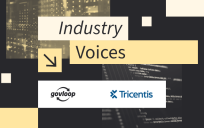Updating legacy systems is one of the biggest mandates coming from the White House heading into 2020. Often when agencies think about modernizing systems, they think about implementing a cloud solution, but automation is also essential to embrace the power of efficiency. For instance, automation reduces error rates because of limited human interaction, and enables Agile and DevOps processes, which allow for speedier service delivery. Before federal agencies invest in cloud and automation, however, they need to fully understand the constraints and roadblocks related to these technologies.
One challenge is that just as yesterday’s technology doesn’t go far enough to meet today’s needs, neither do many entrenched processes. For instance, agencies are stymied by the iterative models they’re used to – manually defining each step to be taken, said Rebecca Fitzhugh, Principal Technologist at Rubrik. She likened it to giving someone directions to her house by saying, “First, leave your house, then get in your car, then drive straight on the road for five minutes.”
A declarative policy-driven approach is better, she said. It shows the end state and lets an application take you there. “I would just say, ‘Here’s my address,’ and then we plug that in and get there. That’s a real tenet of IT transformation.”
A second challenge lies not in technology, but in planning and culture. Specifically, agencies must take into account the business impact of transformation projects related to IT modernization. IT modernization is the integration of new technology into all areas of a business, fundamentally changing how an agency operates and delivers value to customers.
But many people are averse to change, even when the outcomes are beneficial. To get stakeholder support for modernization efforts, agencies must map out how they can get attention-grabbing small wins that can be scaled for further growth once that buy-in is there.
“Without having a clear understanding of the business impact, a lot of transformation projects fall because, simply put, IT is unable to secure the key stakeholder buy-in because they haven’t done their due diligence upfront,” Fitzhugh said. “They’re just trying to ram in whatever new piece of software it is.”
Careful planning also addresses a third challenge: ensuring that agencies can simultaneously support legacy and modern systems. A complete overhaul of technology can wreak havoc not only from a technical perspective, but also a cultural one.
“Imagine trying to apply [automated workflows] to legacy technology where the interface requires some kind of archaic console and the software looks like it was written for Windows 3.1,” Fitzhugh said. “It’s not really fun and it often derails any kind of effort to deliver services in an automated fashion.”
The Solution: A Unified Cloud Data Management Platform
The glue that connects old and new systems is data. Agencies must ensure that as they move to new technologies, data housed in legacy systems remains secure and available. They must also ensure that they can use the data with new technologies to create new – sometimes cloud-native – applications.
To guarantee that legacy, modern and cloud-native applications can work synergistically, agencies need an effective cloud data management platform – a single, secure source for all data, whether that data is on-premises, in the cloud or at the edge. The platform should consolidate hardware and software components into a single software fabric that can run anywhere and scale as needed.
Combining automation and cloud to create a high-function IT service model involves investing time in the design phase to understand what data and technology you have, where gaps exist and what you need to fill them.
Fitzhugh recommends that agencies see cloud-based automation as a cycle:
- Come up with a plan.
- Build the infrastructure and services needed to test and tweak the plan.
- Deploy software for consumption.
- Provide operational excellence, monitoring for pivot points.
- Start work on the next plan.
The feedback loop should close on itself.
What’s more, agencies should use tools that work well with others. Older applications tend to run on older or obsolete operating systems that require a lot of manual care. By contrast, automation reduces risks associated with building, testing, deploying, remediating and monitoring. Determine what tools fit into each category and how compatible they are across the applications and platforms your agency has.
Armed with all that knowledge, agencies can implement a platform that embraces automation.
This article is an excerpt from GovLoop’s recent report, “Automation and Cloud: The Building Blocks of Successful Modernization.” Download the full report here.






Leave a Reply
You must be logged in to post a comment.